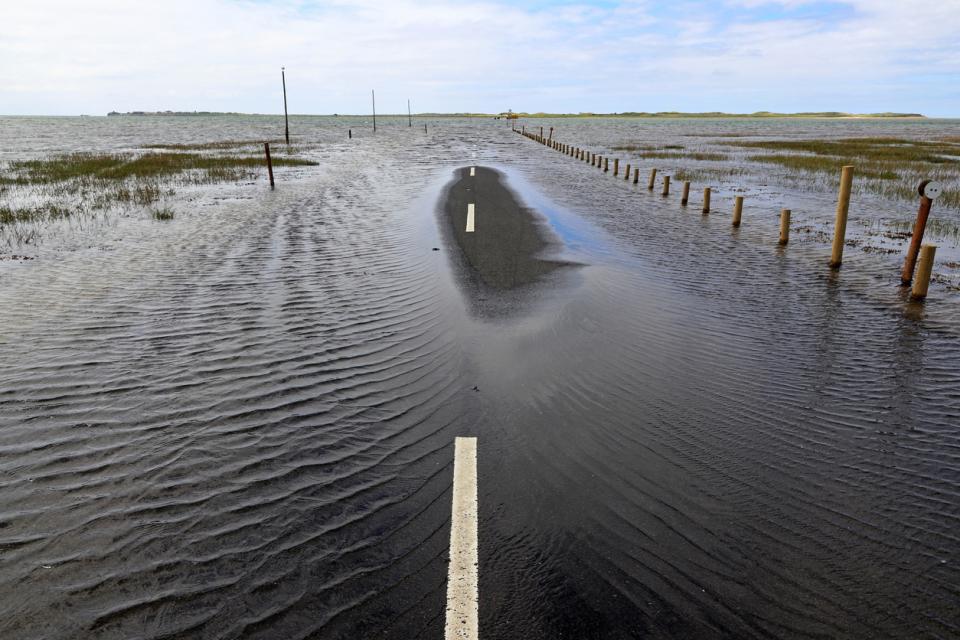Choosing a parking spot can be tricky when there are lots of options. Perhaps a space closest to the supermarket entrance is the best when carrying large loads. Or one at the side with plenty of shade on a hot, sunny afternoon. Maybe a slot in the furthest corner works well if your daily step count is below par. Or an extra wide bay if the chance of door scrapes and dings are to be minimised. Decisions, decisions, decisions.
The eventual choice will reflect the priorities of the driver – whether they are convenience, comfort, fitness, or defensiveness. Much less trivial, development of a climate adaptation plan for a university requires shortlisting and ranking risk management options according to specified criteria. However, unlike the parking options, which are clear, adaptation decisions contend with a great deal of uncertainty about the future pace and sometimes direction of climate change impacts on people and institutions.
- Resource collection: Universities’ role in the climate change battle
- Building futures: how estates directors can deliver net zero
- Accelerating towards net zero emissions: how to mobilise your university on climate action
In part three, we closed with a set of illustrative actions that could protect students and staff from more severe heatwaves. These included upgrading problematic buildings with cooler, more reflective materials, and better ventilation; incorporating more vegetated spaces and water bodies into campuses; targeting vulnerable groups via weather forecasts and heat health advice; and rescheduling academic and sporting activities to cooler periods. In practice, there are probably insufficient resources to introduce all these measures at once. So, how might they be ranked and implemented in the most effective way?
Steps five and six of the UK Universities Climate Network (UUCN) framework on strengthening the climate resilience of higher education institutions address the prioritisation and evaluation of climate adaptations. Step five focuses on prioritising and implementing the most urgent climate actions. Step six ensures that monitoring and evaluation processes are in place to track outcomes on the way to resilient net zero:
Step 5: Implementing adaptation actions
Let’s imagine that we have identified the most urgent climate risks faced by the university, using step three of the framework, and compiled an inventory of responses in line with step four. Feasibly, the priority is flash flooding. Now consider a particularly vulnerable asset – such as a ground floor laboratory – that has been flooded many times. Potential structural solutions would be to improve local drainage and permeability of open surfaces, construct a levee or retention pond, raise the whole floor level, retrofit with flood-resilient materials, or relocate the facility. Alternatively, high-resolution flood forecasts could be used to trigger evacuation, movement of valuable equipment and deployment of temporary flood defences. To do nothing and live with the recurrent damage and disruption is also an option. Rating criteria for adaptation options might be safety, cost, effectiveness, functionality, adaptability, longevity, ease of implementation, social acceptability, carbon footprint and wider environmental benefits.
The most cost-effective option could be to install temporary flood barriers but these depend on timely and accurate forecasts as well as on qualified personnel for their operation. Access to the building would be impeded so functionality, and ease of implementation, would be low. Instead, a retention pond would be expensive to build and afford protection up to a point so is less cost-effective, although it offers improved biodiversity and amenity value. The cost of moving the laboratory is prohibitively high even if this option delivers most on safety, functionality and longevity.
From this hypothetical case, it is clear that the criteria are not regarded equally. On a scale of 0 (least preferred) to 1 (most preferred) we might weight safety and cost as 1, and effectiveness and longevity as 0.8, with lower scores for the remaining characteristics. These weights would be highly contextual and should be negotiated as part of a transparent adaptation planning process, with input from stakeholders across the university community. So far, we have considered only the single climate risk of flash flooding and its impact on one building – ideally multiple risks and multiple receptors would be evaluated in this way at an institutional level, including for off-site climate impacts. Multi-criteria analysis is widely used in these kinds of complex situation. The tool provides a systematic way of blending expert input and stakeholder consultation when scoring multiple adaptation options against agreed criteria. The output is an overall ranking of tabled adaptation options.
Step 6: Monitoring progress towards resilient net zero
Now let’s consider the following adaptations for a flood-prone lab, sequenced according to their cost-effectiveness: (1) a local flood action plan reliant on forecasts and temporary barriers; (2) retrofitting the building with hard floors and raised electrical circuits; (3) replacing exterior paving with permeable surfaces; or (4) decommissioning the site and constructing a new building outside the flood zone. Note: from the perspective of achieving resilient net zero, options (1) to (4) have increasingly large carbon footprints. At what point then should option (1) be augmented by (2), then by (3) and eventually (4)?
This depends on the severity of climate change impacts, institutional resources and appetite for risk. Hence, a long-term monitoring, evaluation and reporting framework is needed to track evolving climate hazards as well as progress in implementing adaptation activities. Critically, this would focus on adaptation outcomes in terms of improved climate resilience. This requires locally relevant indicators of climate-related risks and actions. In the case of flash flooding, these might be on-site records of heavy rainfall, surface water flooding, cost of damages and hours of disruption. Ideally, such indicators would be reported annually to senior management and benchmarked against historic data. These metrics would also sit alongside those charting movement towards net zero emissions. As the climate risks grow, so new adaptation and mitigation actions are brought forward.
Closing remarks
Our four-part series has outlined the steps that can be taken by universities to achieve resilient net zero – that is, reduce the impacts of climate change whilst also shrinking carbon emissions.
Read the previous three articles here:
Start your university on a path to resilient net zero
Setting scenarios for a university adapted to climate change
A guide to evaluating and managing climate risks to universities
This is a long-term, technical endeavour that should involve all communities working and living on and around the university site and beyond. Even if the work is outsourced to consultants, we all have roles to play. These might be as informed managers, providers of information and knowledge, or beneficiaries of actions taken to safeguard people, property and university operations from climate change. The whole process of adapting to climate change is an iterative and collective effort so you may like to return to the first part of our series or even join a community of practice on managing climate risks.
Rob Wilby is professor of hydroclimatic modelling at Loughborough University and Shona Smith is head of the Priestley Centre for Climate Futures at the University of Leeds.
If you would like advice and insight from academics and university staff delivered direct to your inbox each week, sign up for the Campus newsletter.




comment